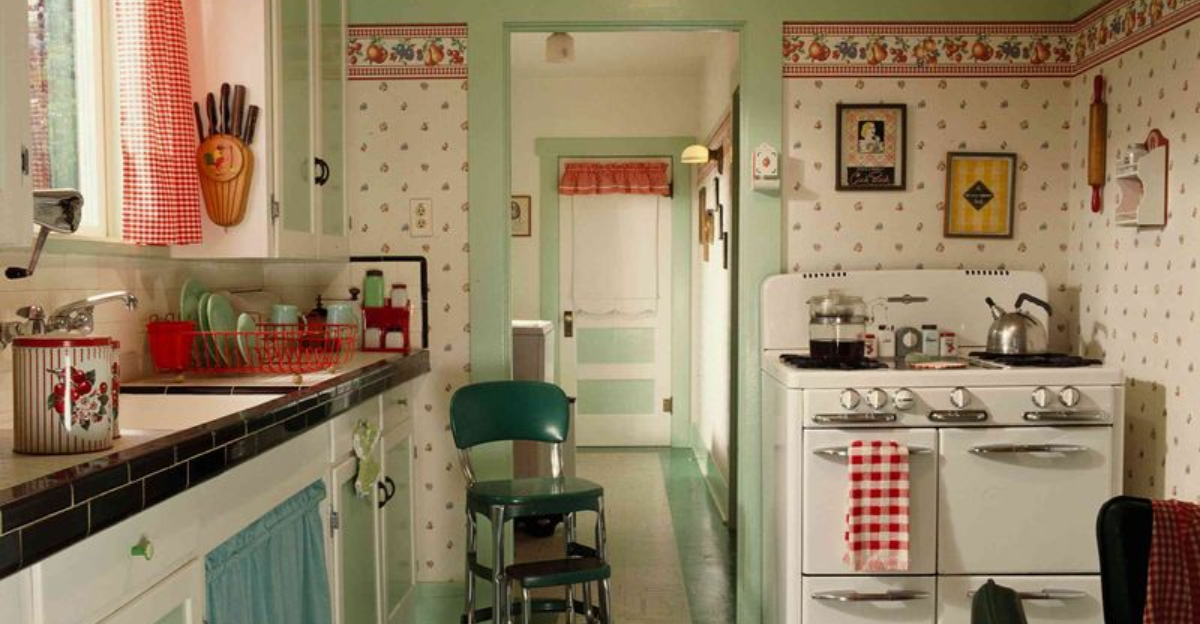Kitchens tell stories through their worn countertops and faded wallpaper. Each cabinet pull, ceiling beam, and stovetop holds memories of meals shared and recipes passed down through generations.
From colonial hearths to atomic age wonders, these culinary spaces reveal how families lived, cooked, and gathered across the shifting tides of history.
1. Colonial Hearth (1700s)
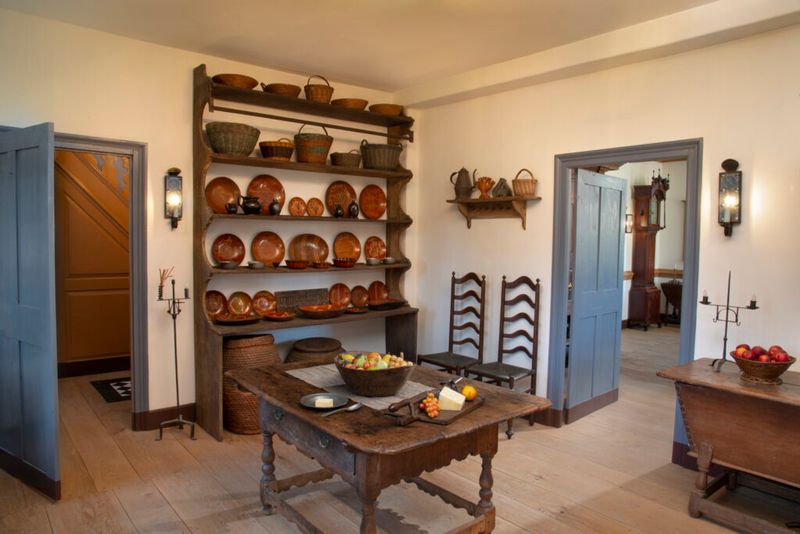
Massive stone fireplaces dominated these kitchens, with cast iron pots dangling from wrought iron cranes. Wooden tables stood sturdy and scarred from centuries of meal prep.
Pewter plates lined open shelves while copper kettles gleamed in firelight. Simple benches invited family members to shell peas or knead bread together during long winter evenings. The heart of early American homes beat strongest here.
2. Victorian Splendor (1880s)
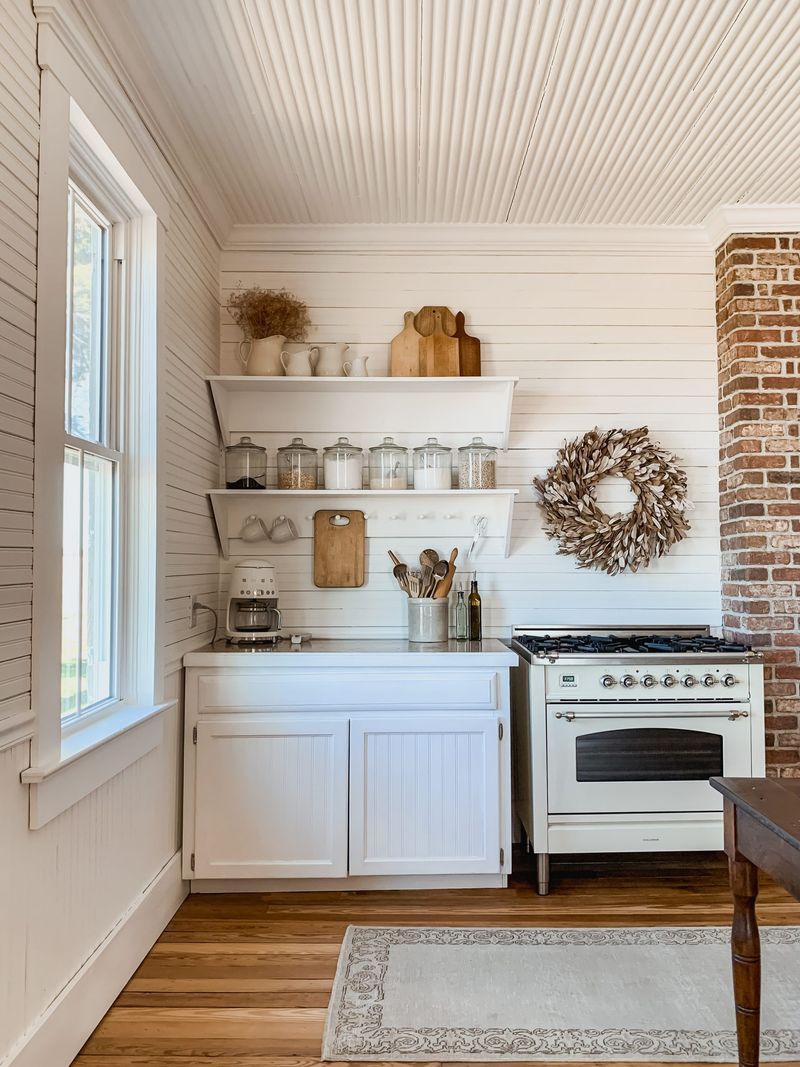
Ornate wooden cabinetry with carved details stretched floor to ceiling, showcasing the family’s prosperity. Servants bustled between the massive cast iron range and butler’s pantry while copper molds lined the walls.
Marble countertops provided cool surfaces for pastry work. Gas lighting fixtures cast yellow warmth across patterned tile floors, illuminating a room designed for staff rather than the lady of the house.
3. Farmhouse Simplicity (1900-1915)
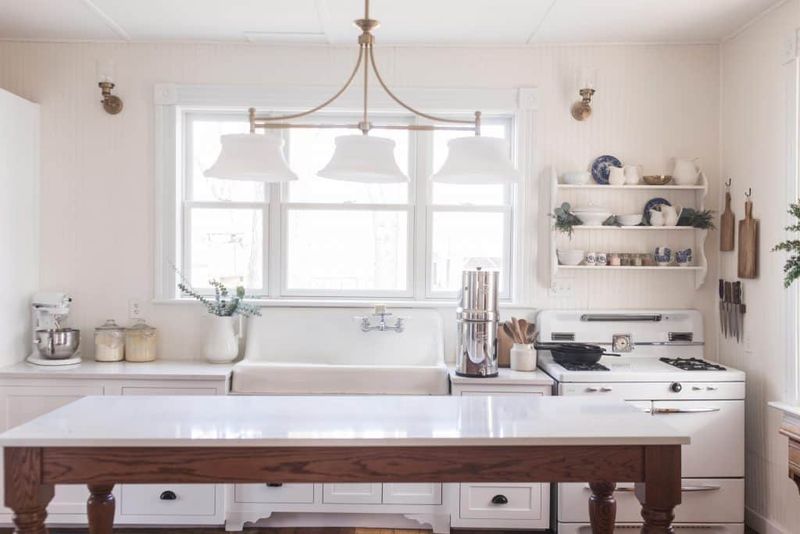
Morning light streamed through unadorned windows onto worn wooden floors. Farm wives moved efficiently between the wood-burning cookstove and the dry sink with its hand pump.
White painted cabinets brightened the workspace, while the kitchen table doubled as prep station and dining spot. Canned goods from summer harvests lined open shelves, capturing sunlight in jewel-toned jars – practical beauty born of necessity.
4. Art Deco Glamour (1920s-30s)
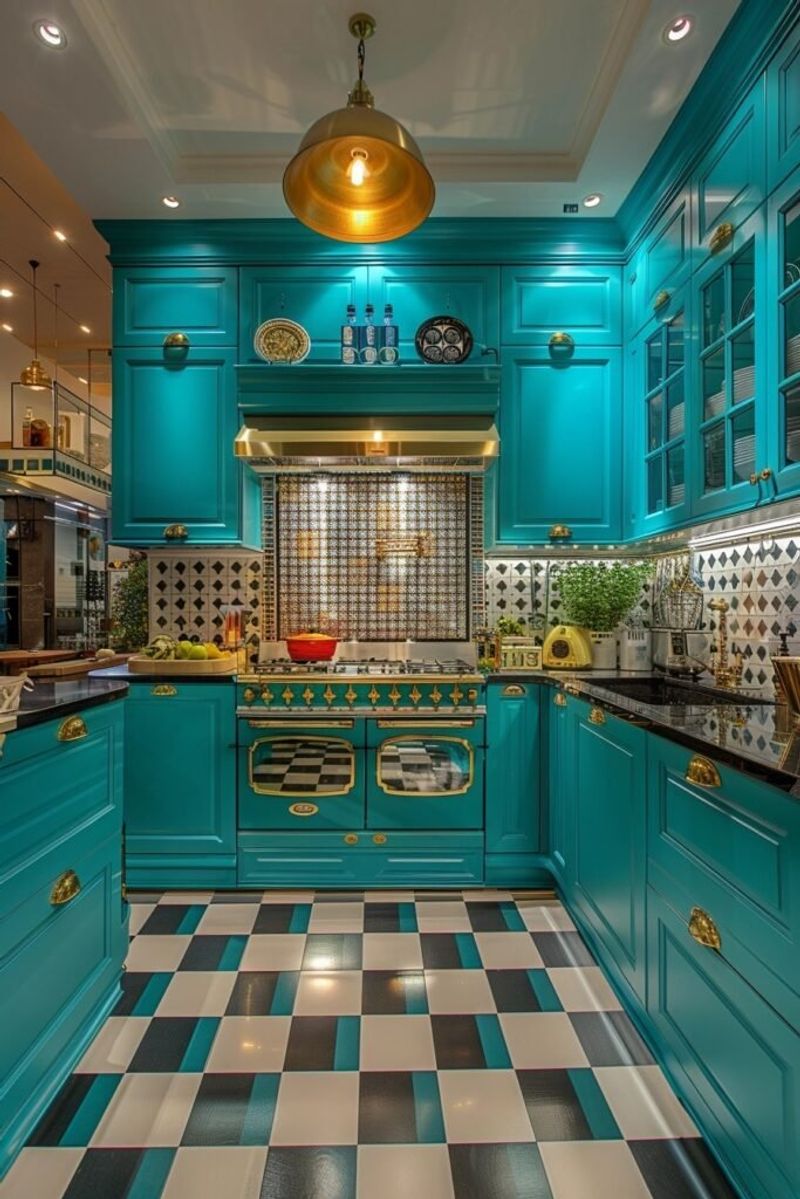
Gleaming white enamel stoves with nickel trim announced modern efficiency had arrived. Bold geometric patterns adorned linoleum floors while built-in cabinets featured stylish waterfall edges.
Colorful Fiestaware dishes added pops of cheerful color. Electric refrigerators replaced iceboxes, humming quietly in corners of kitchens now designed to be seen rather than hidden away – reflecting the Jazz Age’s liberation from Victorian constraints.
5. Depression-Era Ingenuity (1930s)
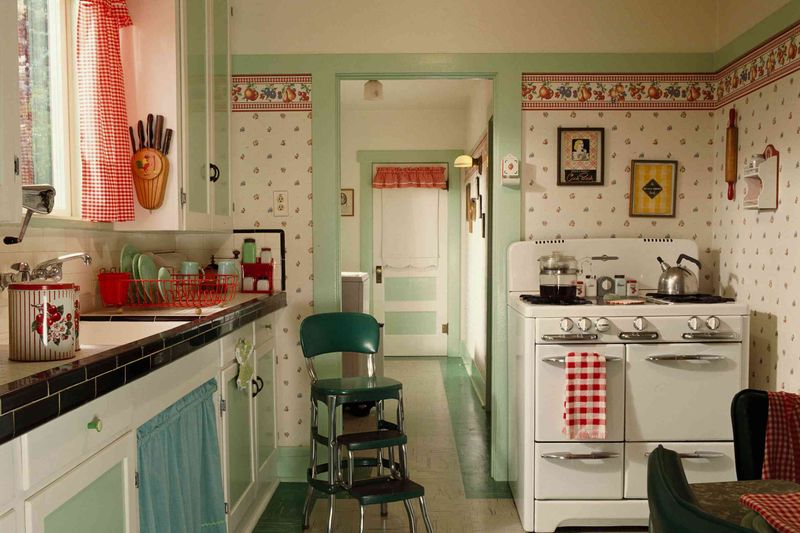
Faded linoleum covered floors in kitchens where every scrap was saved. Women clipped recipes promising to stretch meager ingredients into filling family meals.
Pastel-painted cabinets brought cheer despite economic hardship. Glass canisters stored precious flour and sugar while Hoosier cabinets provided all-in-one workspace with flour sifters built right in. Radio consoles brought President Roosevelt’s fireside chats into homes where resilience simmered alongside soup bones.
6. Wartime Utility (1940-45)
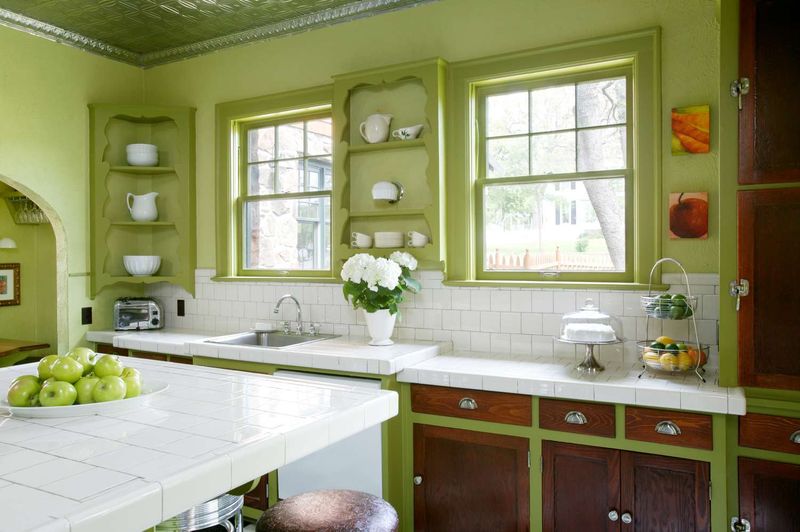
Victory garden pamphlets and ration books rested on sturdy enamel-topped tables. Metal cabinets painted in government-issue white housed creative substitutions for rationed ingredients.
Women consulted posters about food preservation while pressure canners preserved victory garden harvests.
Utility trumped style as families sacrificed for the war effort. Yet somehow, between the aluminum collections and cooking with limited sugar, these kitchens produced comfort foods that sustained a nation through darkness.
7. Pastel Postwar Dream (1950-55)
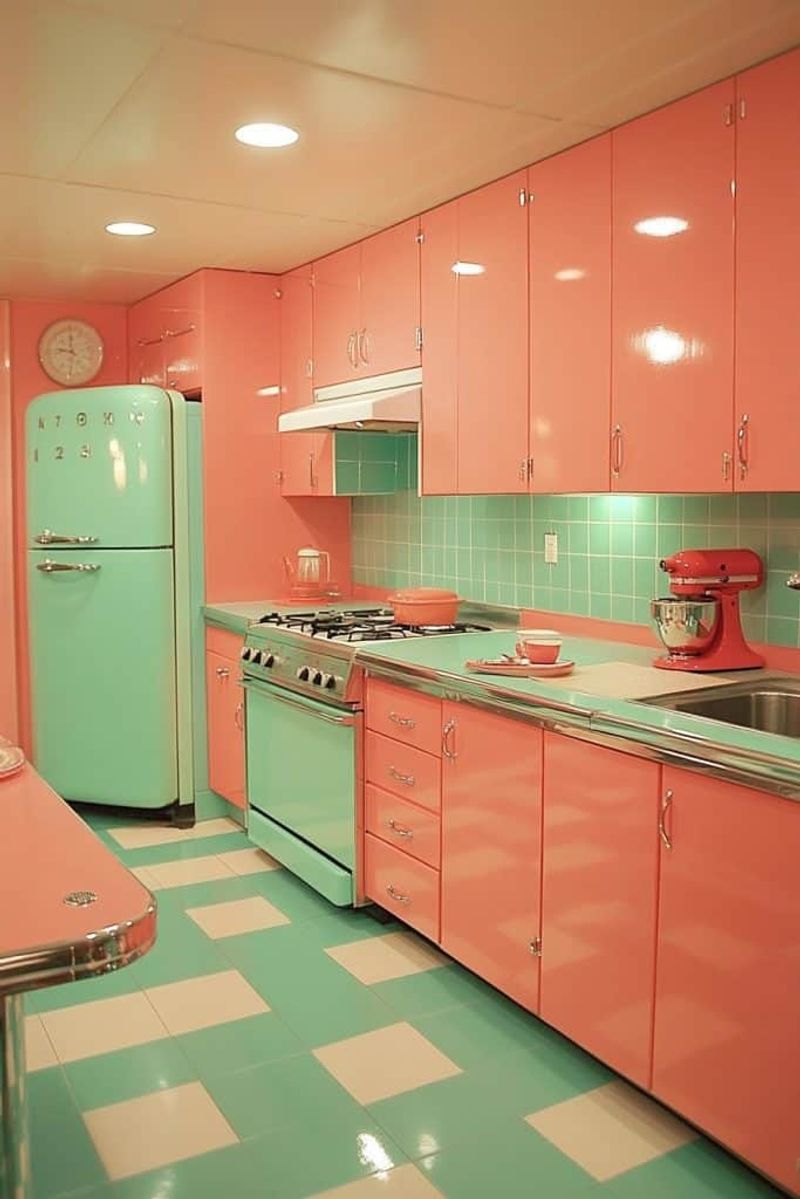
Candy-colored appliances in turquoise, yellow, and pink celebrated postwar prosperity. Boomerang patterns danced across Formica countertops while chrome dinette sets gleamed under fluorescent lighting.
Electric mixers promised housewives leisure time even as they whipped up elaborate Jell-O molds. Novelty-print curtains framed windows above deep porcelain sinks. America’s optimism manifested in kitchens where suburbia found its beating heart – modern, convenient, and unabashedly cheerful.
8. Atomic Age Innovation (1956-63)
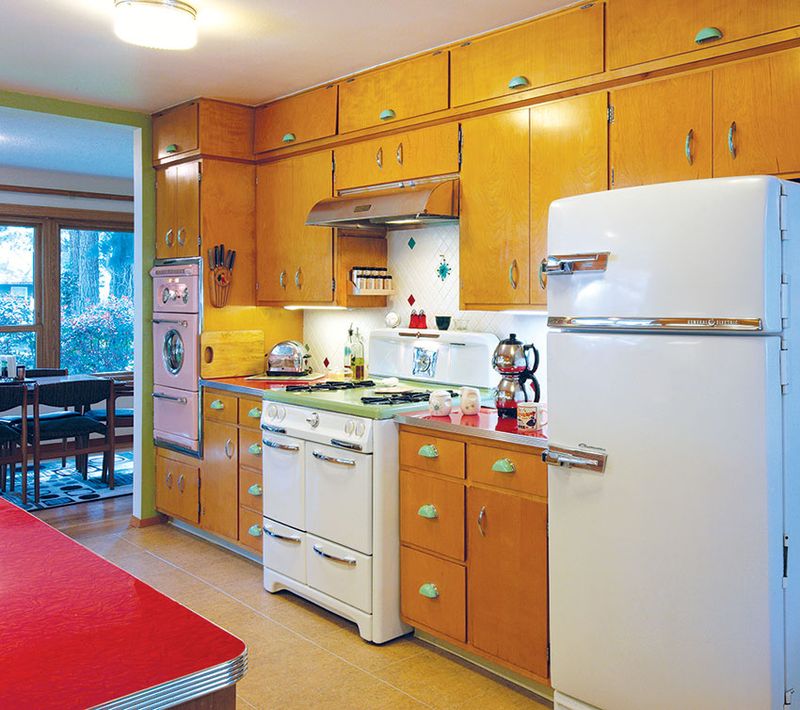
Starburst clocks ticked above sleek walnut cabinets where space-age design met domestic life. Dramatic pendant lighting illuminated built-in breakfast nooks upholstered in vinyl.
Coppertone appliances promised push-button convenience while wall ovens separated from cooktops for the first time. Television sets found permanent homes in eating areas as TV dinners transformed mealtime rituals.
Kennedy-era kitchens balanced futuristic excitement with practical functionality for growing baby boom families.
9. Woodsy Warmth (1965-75)
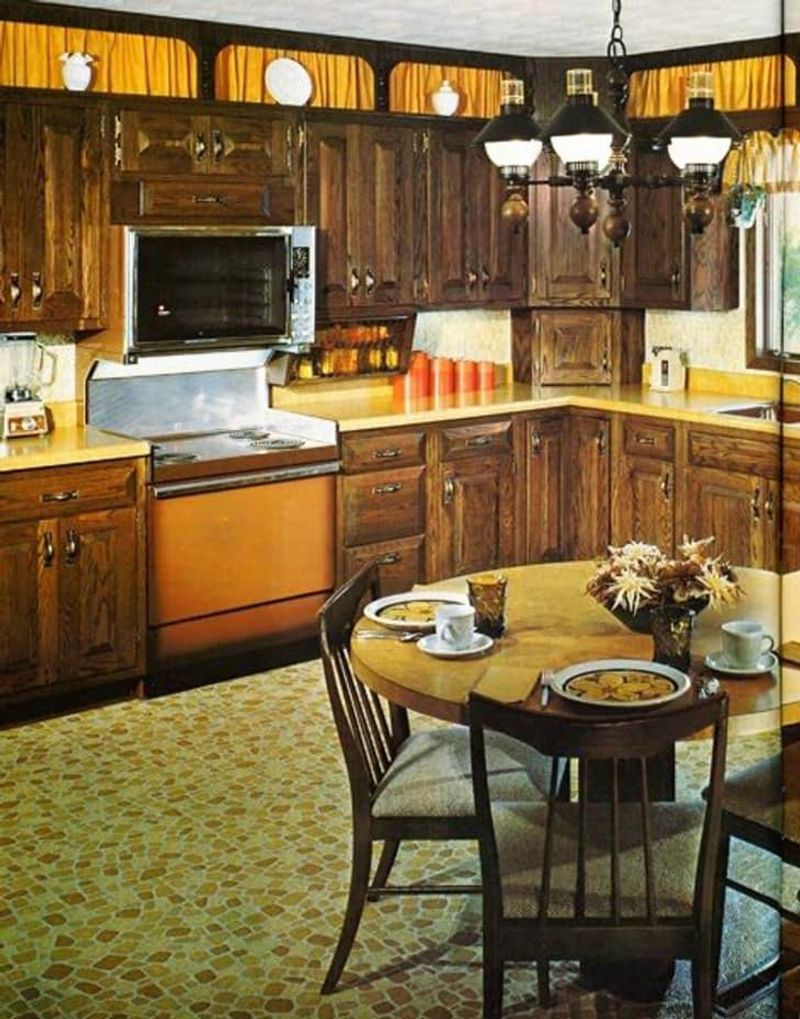
Avocado green appliances nestled between dark wood cabinets with chunky hardware. Macramé plant hangers dangled spider plants above ceramic canisters labeled in groovy lettering.
Exposed ceiling beams crossed over cork-tiled floors where family dogs stretched out. Fondue sets and electric woks expanded American palates beyond meat and potatoes. Earthy tones created cozy havens where families gathered around kitchen islands – a new innovation reflecting changing social dynamics.
10. Country Kitsch (1980-85)
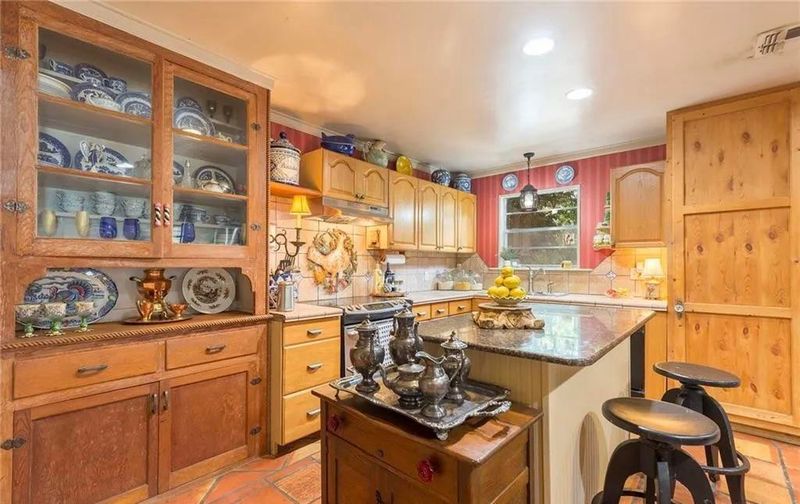
Goose figurines in bonnets paraded across oak cabinets with cathedral arch doors. Blue and mauve color schemes softened the Reagan era’s hard edges while wallpaper borders featured hearts and geese.
Brass hardware and track lighting brightened spaces where bread machines claimed counter territory. Kitchens expanded to become “great rooms” with family areas flowing into cooking spaces. Microwave ovens revolutionized meal prep for working mothers juggling career and family.
11. Glass Block Glam (1986-92)
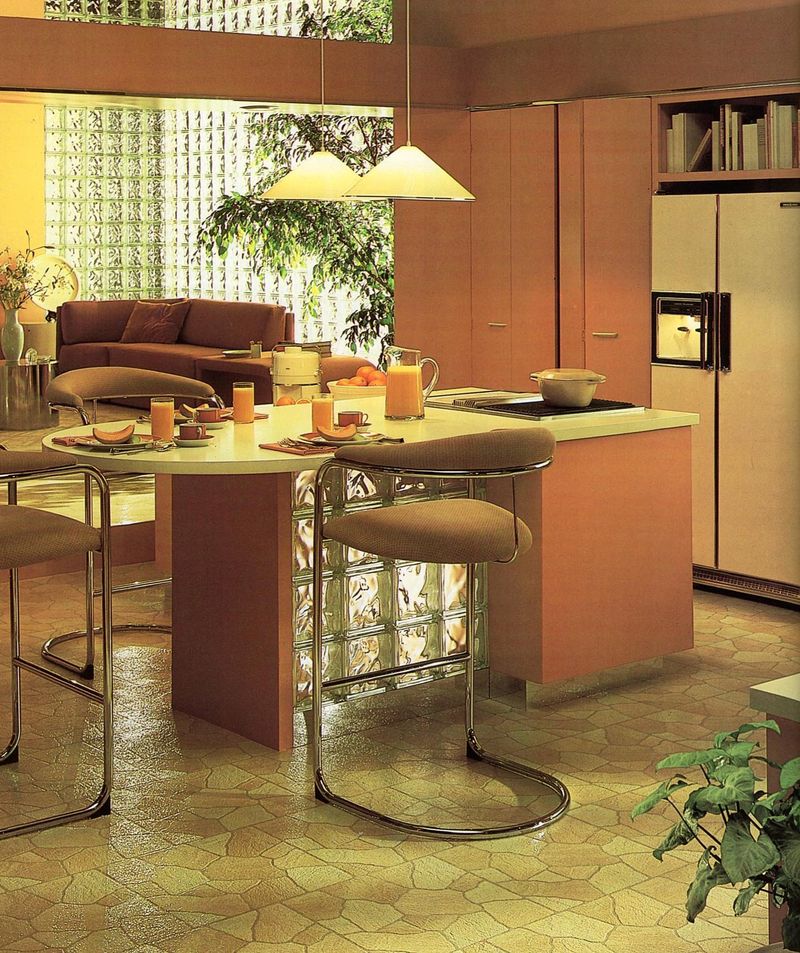
Glass block room dividers created drama while track lighting cast shadows across white laminate cabinets. Almond-colored appliances stood ready beneath dusty rose or hunter green countertops.
Breakfast bars with backless wooden stools replaced formal dining rooms. Fake ivy trailed from cabinet tops, softening sharp angles. California cuisine and pasta machines reflected America’s expanding culinary horizons during an era when kitchens became status symbols rather than just workspaces.
12. Tuscan-Inspired Excess (1995-2005)
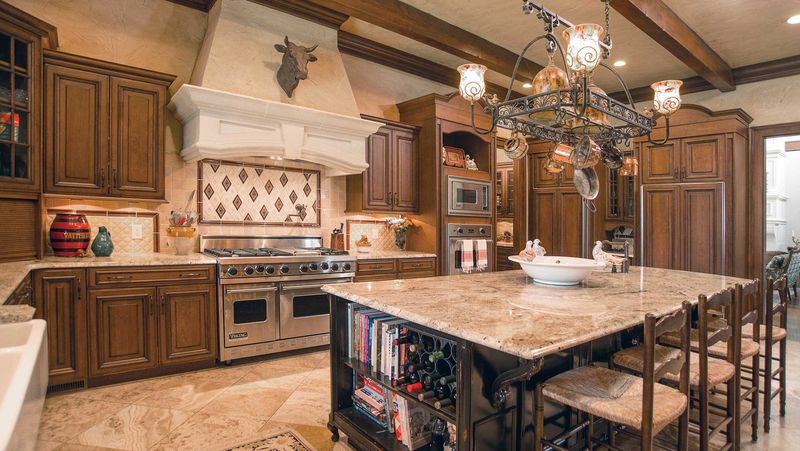
Faux-finished walls in amber hues created Mediterranean warmth above granite countertops. Massive pot racks dangled copper cookware inspired by Food Network celebrities.
Oversized islands with corbels and ornate details anchored spaces where stainless steel appliances signaled serious cooking aspirations. Wine racks and espresso machines promised sophisticated entertaining.
McMansion kitchens flaunted prosperity through tumbled marble backsplashes and commercial-grade ranges rarely used to their full potential.
13. Farmhouse Revival (2010-2015)
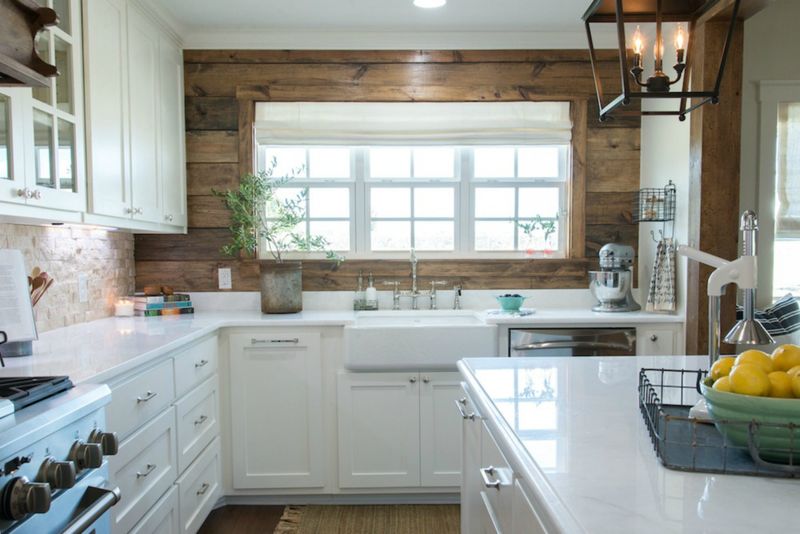
Shiplap walls and barn doors brought rustic charm to modern homes. Apron-front sinks nestled between white Shaker cabinets while reclaimed wood shelves displayed carefully curated mason jars.
Industrial pendant lights hung above islands painted in muted blues and greens. Subway tile stretched wall to wall, creating clean backdrops for vintage-inspired appliances. Pinterest-ready spaces balanced nostalgia with modern convenience as homeowners sought authenticity during uncertain economic times.
14. Minimalist Serenity (2015-2020)
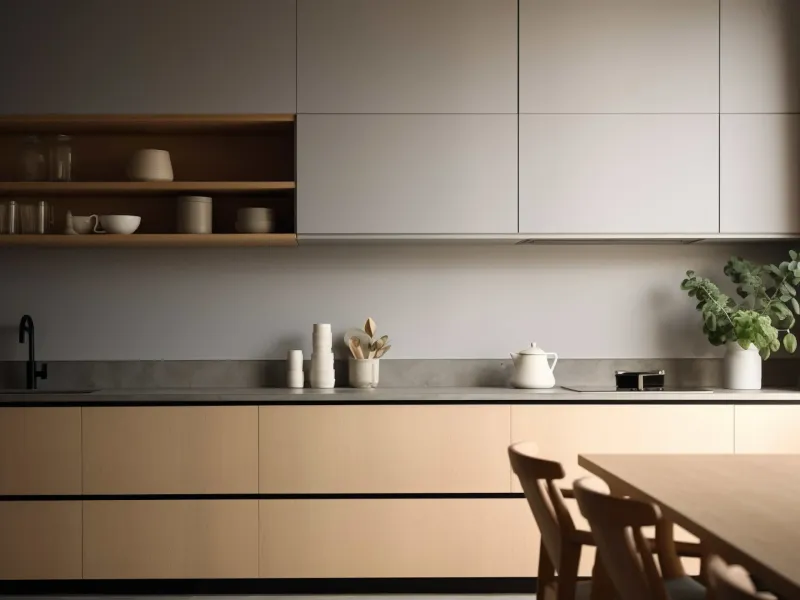
Handle-free cabinets in matte finishes created seamless walls of storage. Waterfall countertops in engineered quartz flowed from horizontal to vertical planes without interruption.
Smart appliances disappeared behind integrated panels while hidden charging stations powered ever-present devices. Monochromatic color schemes in whites and grays created calm amid chaotic modern life.
Marie Kondo’s influence cleared countertops of all but essential items, allowing kitchens to become blank canvases for mindful living.
15. Pandemic Practicality (2020-Present)
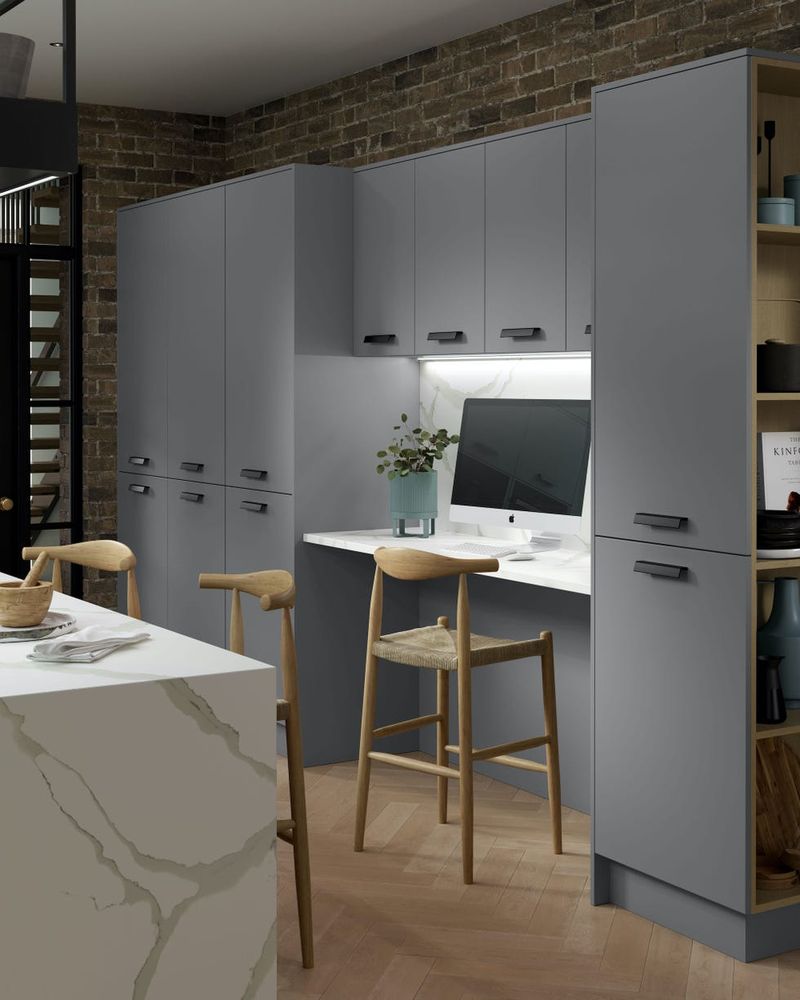
Pantry shelves bulge with staples after supply chain lessons were hard-learned. Sourdough starters claim counter space near stand mixers that haven’t rested since lockdown began.
Work-from-home stations carve out corners between coffee stations and homework areas. Vegetable gardens visible through windows connect indoor cooking to outdoor growing.
Modern kitchens now multitask as offices, classrooms, bakeries, and sanctuaries – reflecting a world forever changed by collective trauma and newfound resilience.

